E. Spellman & Associates has over 10 years experience in undertaking investigation methods and associated technical engineering reports required for successful insurance claims. We undertake insurance investigation works and reports for both private clients and major insurance companies.
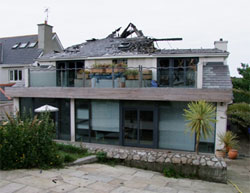
Our company ethos is to deal with each claim in a prompt, professional, fair and objective manner.
E.Spellman & Associates are full and active members of the engineering panel for Axa Insurance since 2010.
When undertaking work for large insurance companies our engineers deal with the customers of those companies in a clear and respectfully manner. We understand that we are the face of the insurance company to the customer and we undertake our work to enhance the image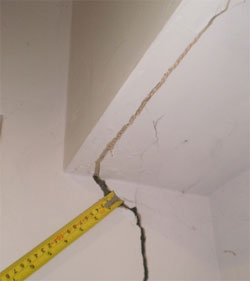 of the insurance company in the eyes of their customer.
of the insurance company in the eyes of their customer.
As Chartered Engineers, we undertake the preparation of professional engineering reports for the following on a regular basis:
- Subsidence claims
- Water loss claims
- Fire investigation claims
- Storm damage claims
- Oil spillage claims
- Third party liability loss
- Traffic accident claims
When the insurance claim has been successfully proven we prepare a cost effective design solution and associated scope of works which would include construction drawings and specifications. E.Spellman & Associates then act in a consultant’s role during construction stage with other relevant parties and undertake regular inspections to assure the required standard of work. Other relevant parties include the contractor, specialist sub-contractors, loss adjustors, loss assessors, insurance company and householder.
Monitoring & Investigation tools:
Crack Monitoring:
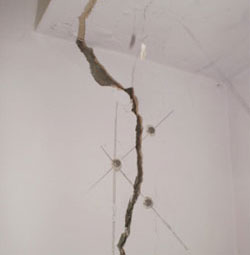
A useful monitoring tool for the identification of subsidence is crack monitoring. This information allows us to establish whether the structure is continuing to move or whether the initial movement has ceased. This assists in identifying settlement cracking from more serious subsidence cracking.
Sewerage Camera Inspection:
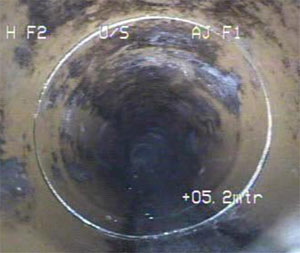
A loss of water from foul and surface water sewers can cause saturation to the ground under foundations. This can lead to the washing away of fines under the foundation creating voids and reducing bearing capacity of the ground leading to foundation failure and cracking. Inspection of the sewerage lines can be undertaken by camera inspection. This can assist in the identification of water loss, sewer deflection, joint separation and breakages.
Trialhole Investigation:
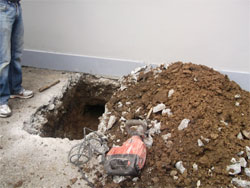
Trialhole investigation involves the manual digging of an area close to the affected area of the building. This can assist the engineer in assessing the existing foundation the structure is constructed on and also assists in assessing the ground condition and makeup under the foundation. In cases of water escape the fractured or damaged water pipe can also be identified by this method.
Ground Investigations:
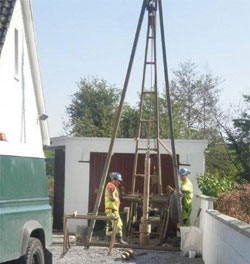
Assessment of the existing ground conditions under failing foundations is essential information to undertake the most cost effective design solution for the foundation system. There are a number of different types of ground investigation techniques available with the most commonly used being:
- Light cable percussion drilling (Shell & Auger Boreholes) – This method provides a full descrip
 tion of the ground including water levels, Standard Penetration Tests (SPT) N-values, and soil samples for laboratory testing if required;
tion of the ground including water levels, Standard Penetration Tests (SPT) N-values, and soil samples for laboratory testing if required; - Dynamic Probing with Window Sampling – This method also provides a description of the ground and gives an estimation of bearing capacity. Once the ground investigation reports have been analysed by our Engineers, the most cost effective design solution is prepared.
Remediation Action:
Mini-Piling and Underpinning Systems:
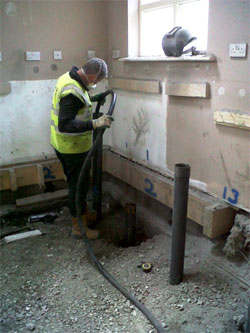
The failure of a foundation system can be remedied in a number of different ways with various different Mini-Piling and Underpinning systems. The selection of most suitable would be chosen by the engineer based on the monitoring and investigation works carried out up to that stage. The remediation works would be chosen firstly on the basis of effectiveness and secondly on the basis of cost analysis undertaken by the engineer. One of the more effective ways to underpin existing foundations is the pile and needle beam combination. In this solution a pile is constructed to the inside and outside of the external wall down to a solid strata. A reinforced concrete needle beam is then constructed through the wall and bears on the two piles. This process is repeated throughout the affected area at calculated centres to support the existing loads.